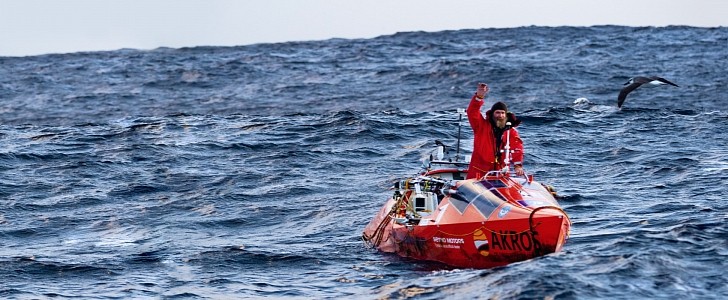While others are dreaming about their next vacation, laying on the beach and enjoying a drink, somebody out there is planning a bold expedition with a noble purpose. His name is Fedor Konyukhov and he will complete the first solo crossing of the Pacific Ocean, aboard a solar-powered catamaran.
As most of us will be getting ready for another year’s ending, December 2021 will be just the beginning for Russian adventurer Fedor Konyukhov, who will be embarking on a 4-month long journey between Concon (Chile) and Brisbane (Australia). This will be the pioneering solo crossing of the Pacific Ocean, from continent to continent, aboard Nova, a solar-powered catamaran.
On one hand, this will be a technological test, meant to observe the performance of a solar-powered vessel that features innovative photovoltaic cells and, on the other hand, it’s an ecological experiment, based on the daily monitoring of micro-plastic pollution levels in the ocean.
Developed by British designer Phil Morrison, Nova is an ocean-class catamaran that is 36 feet (11 meters) long, equipped with 2 electric motors and 24 batteries, each weighing 48.5 lbs. (22 kg). The main solar modules, which are placed horizontally on the upper deck, cover a 549 square feet (51 square meters) surface, with an estimated capacity of generating 32 kilowatt hours (kWh) per day. And, in addition to that, angled solar modules, installed on the hulls, on a 161 square feet (15 square meters) surface, for an extra 4kWh per day.
According to the developers, the solar panels, covering a total surface of 710 square feet (66 square meters), will provide enough power per day for the motors to run 24 hours. And, in case of a cloudy weather, the 60 kWh battery capacity can keep the boat going for 40 hours.
This expedition will not only test the solar module and battery power, but also the innovative photovoltaic cells developed at the Hevel Scientific and Technical Center, in St. Petersburg, which are meant to withstand the corrosive aquatic environment, as well as ultraviolet radiation, while also being lightweight.
Ready to spend more than 100 days completely alone on the ocean, relying only on solar power and batteries, Konyukhov plans to keep a daily video diary, for his ecological observations. The results of this experimental expedition will be used for the future Albatross project, which is a journey around the world, powered only by solar energy.
On one hand, this will be a technological test, meant to observe the performance of a solar-powered vessel that features innovative photovoltaic cells and, on the other hand, it’s an ecological experiment, based on the daily monitoring of micro-plastic pollution levels in the ocean.
Developed by British designer Phil Morrison, Nova is an ocean-class catamaran that is 36 feet (11 meters) long, equipped with 2 electric motors and 24 batteries, each weighing 48.5 lbs. (22 kg). The main solar modules, which are placed horizontally on the upper deck, cover a 549 square feet (51 square meters) surface, with an estimated capacity of generating 32 kilowatt hours (kWh) per day. And, in addition to that, angled solar modules, installed on the hulls, on a 161 square feet (15 square meters) surface, for an extra 4kWh per day.
According to the developers, the solar panels, covering a total surface of 710 square feet (66 square meters), will provide enough power per day for the motors to run 24 hours. And, in case of a cloudy weather, the 60 kWh battery capacity can keep the boat going for 40 hours.
This expedition will not only test the solar module and battery power, but also the innovative photovoltaic cells developed at the Hevel Scientific and Technical Center, in St. Petersburg, which are meant to withstand the corrosive aquatic environment, as well as ultraviolet radiation, while also being lightweight.
Ready to spend more than 100 days completely alone on the ocean, relying only on solar power and batteries, Konyukhov plans to keep a daily video diary, for his ecological observations. The results of this experimental expedition will be used for the future Albatross project, which is a journey around the world, powered only by solar energy.









